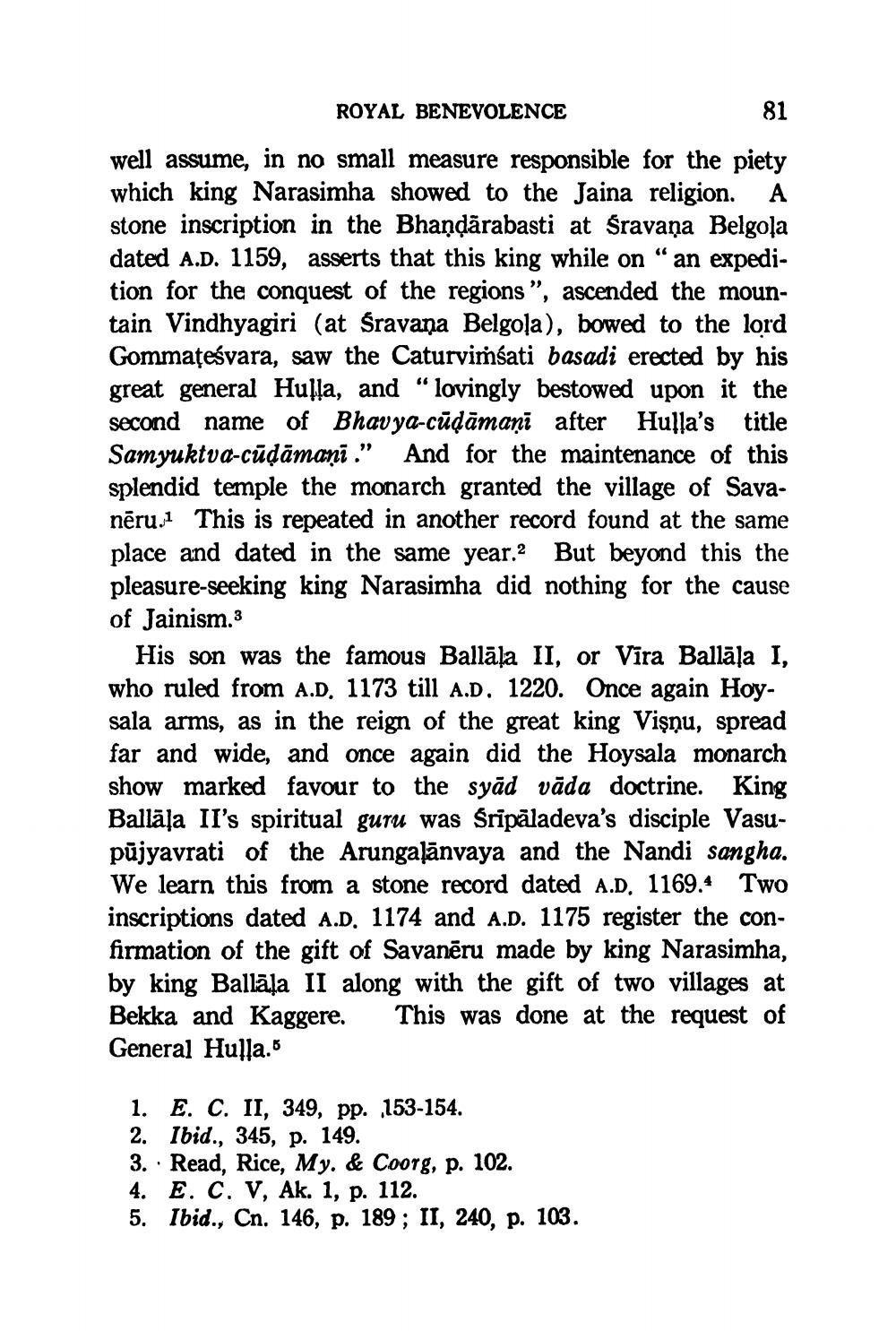________________
ROYAL BENEVOLENCE
well assume, in no small measure responsible for the piety which king Narasimha showed to the Jaina religion. A stone inscription in the Bhanļārabasti at Sravana Belgola dated A.D. 1159, asserts that this king while on “an expedition for the conquest of the regions ", ascended the mountain Vindhyagiri (at Sravana Belgola), bowed to the lord Gommateśvara, saw the Caturvimšati basadi erected by his great general Hulla, and "lovingly bestowed upon it the second name of Bhavya-cūdāmaņi after Hulla's title Samyuktva-cūļāmani.” And for the maintenance of this splendid temple the monarch granted the village of Savanēru. This is repeated in another record found at the same place and dated in the same year. But beyond this the pleasure-seeking king Narasimha did nothing for the cause of Jainism.3
His son was the famous Ballāļa II, or Vīra Ballāļa I, who ruled from A.D. 1173 till A.D. 1220. Once again Hoysala arms, as in the reign of the great king Vişņu, spread far and wide, and once again did the Hoysala monarch show marked favour to the syād vāda doctrine. King Ballāļa II's spiritual guru was Sripaladeva's disciple Vasupūjyavrati of the Arungaļānvaya and the Nandi sangha. We learn this from a stone record dated A.D. 1169.4 Two inscriptions dated A.D. 1174 and A.D. 1175 register the confirmation of the gift of Savanēru made by king Narasimha, by king Ballāļa II along with the gift of two villages at Bekka and Kaggere. This was done at the request of General Hulla.
1. E. C. II, 349, pp. ,153-154. 2. Ibid., 345, p. 149. 3. · Read, Rice, My. & Coorg, p. 102. 4. E. C. V, Ak. 1, p. 112. 5. Ibid., Cn. 146, p. 189; II, 240, p. 103.




